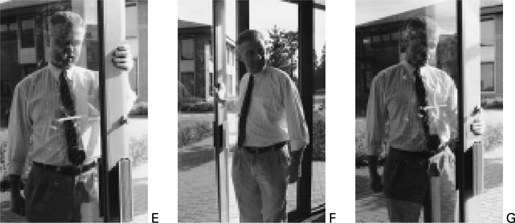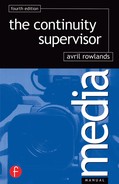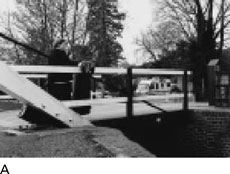Some of the least obvious aspects of continuity are no less important than those already discussed. But they are often overlooked because they are not often apparent in the finished production. The reason they are not apparent is usually because the editor has found a way round the mistakes in one way or another, but in doing so the artistic role of the post production editing process may have been severely limited. Such errors put an unnecessary and time-consuming burden on the editor.
Let us examine these aspects of continuity by starting with the simplest – continuity of action.
Example 1: A girl walks across a bridge, putting her coat on in the process.
The director has planned two camera angles on this action: one from the bank, with the girl walking away from the camera, and the other from the opposite bank, with the girl walking towards the camera. The cut from one camera angle to the other takes place when the girl is somewhere on the bridge.
Suppose in shooting these two angles, there was an error of continuity in the action of putting on the coat. When the girl put on the coat in the second shot, she was in a different position on the bridge from her position in the first shot.
If those shots were then cut and joined together at the logical place, where the director had planned it, the result would show a jump in the action – a jump cut.
It is possible in that situation for the editor to ‘cover up’ this error of continuity by cutting earlier or later. But that would not give as smooth a cut as if the action had been repeated correctly in the second shot. In other words, the cut had to be made where it was mechanically possible and not in the way that was most suitable dramatically.
Example 2: A man opens a door with a key. He enters and closes the door behind him.
There are two camera angles – one on each side of the door. The second angle is taken much later and as the action with the key has been shot on the first angle, the door is set for the man to just push it open for the second shot. On that angle he pushes the door open and walks in and everyone accepts the take. But he uses a different hand on the door and the editor is faced with the same problem as before.
1st angle (A)
2nd angle
(B) Note that the coat is put on in a different place in the bridge. It would not cut together with the first angle
(C) This would have been the correct place for putting the coat on

1st angle
Man approaches door (outside) (D).

2nd angle
From the other side of the door (inside)
(E, F).
Continuity of the hands differs from the first angle. These shots would not cut together
The position of the hands are correct in this shot (G)


